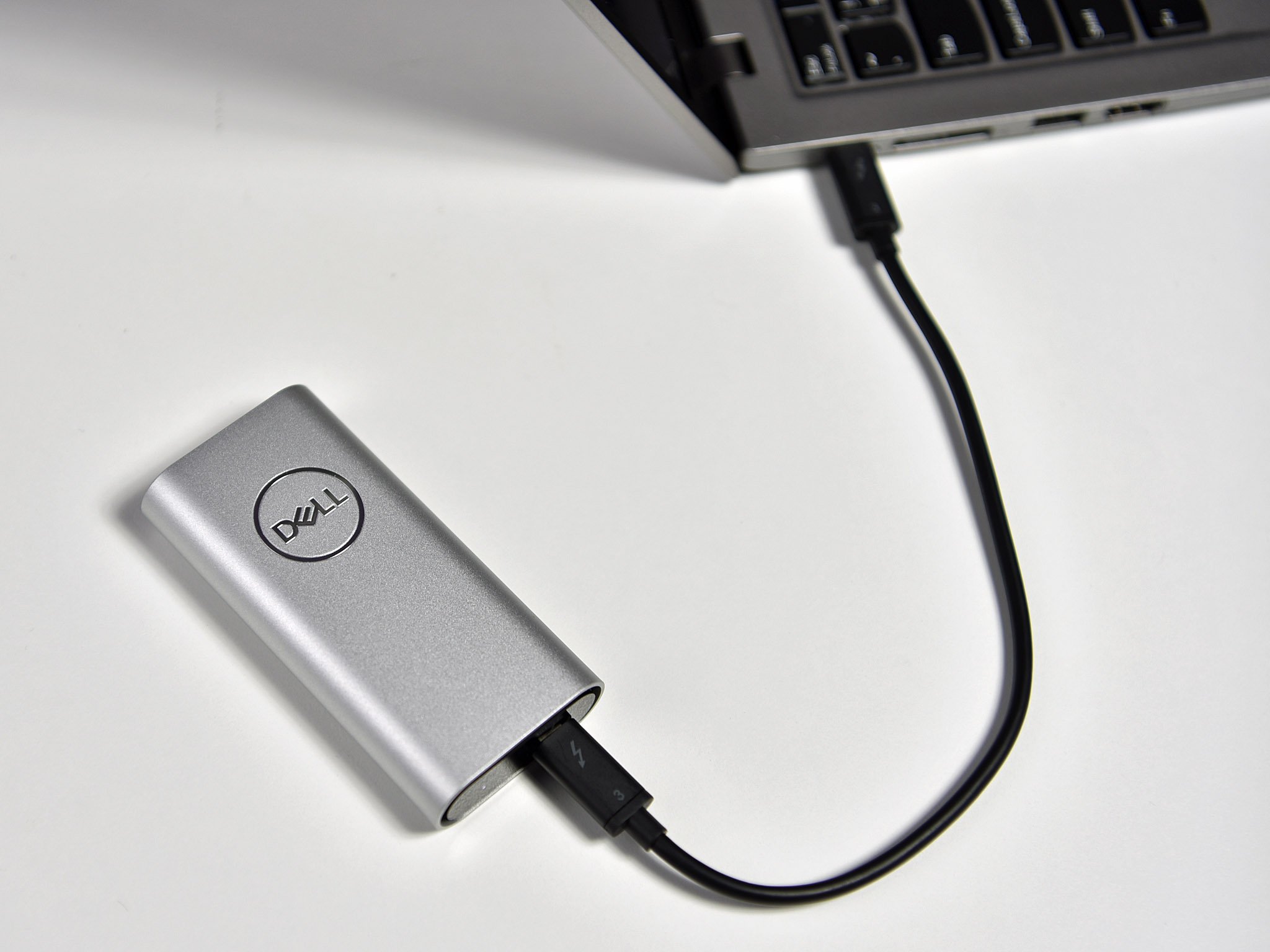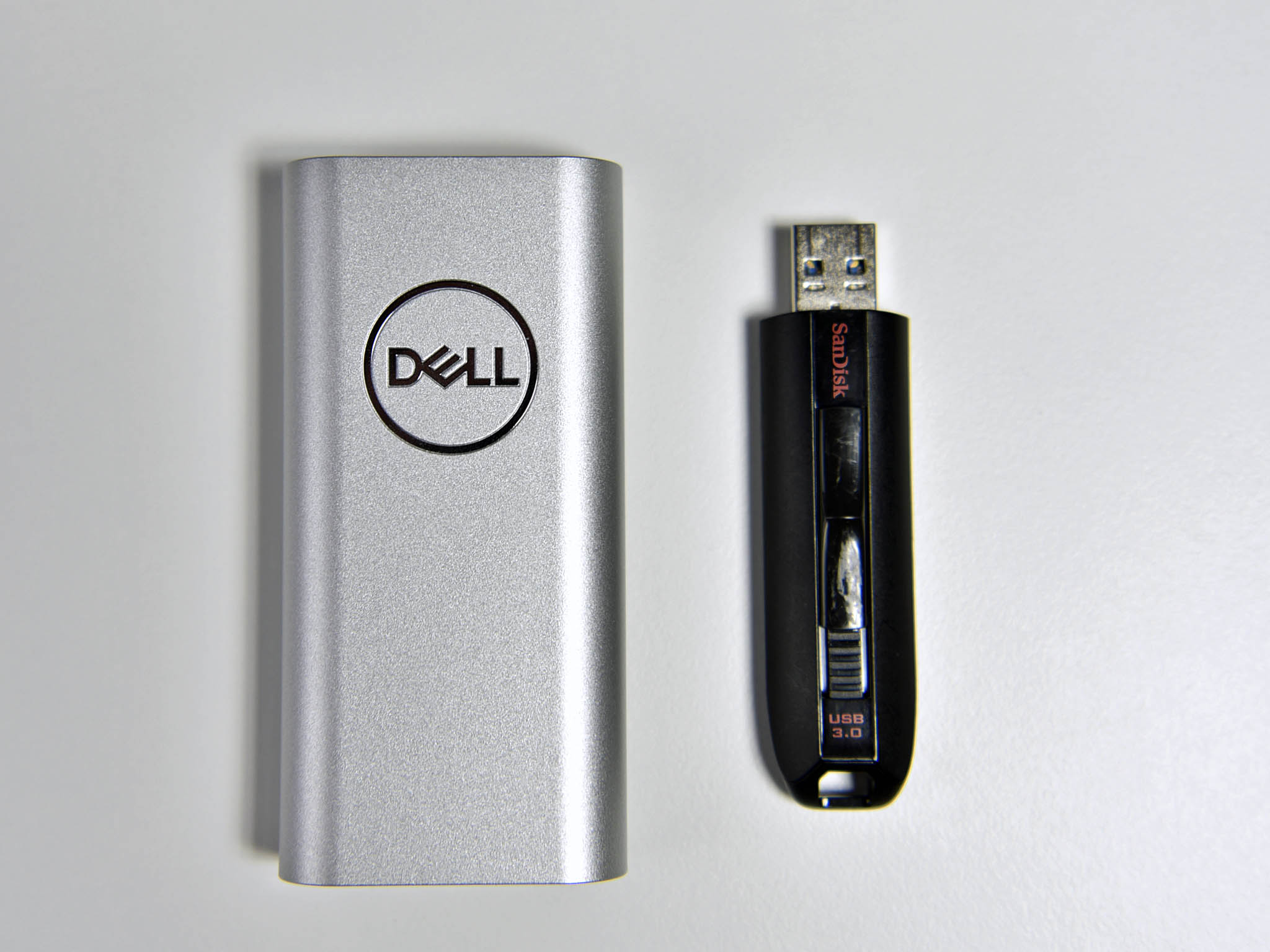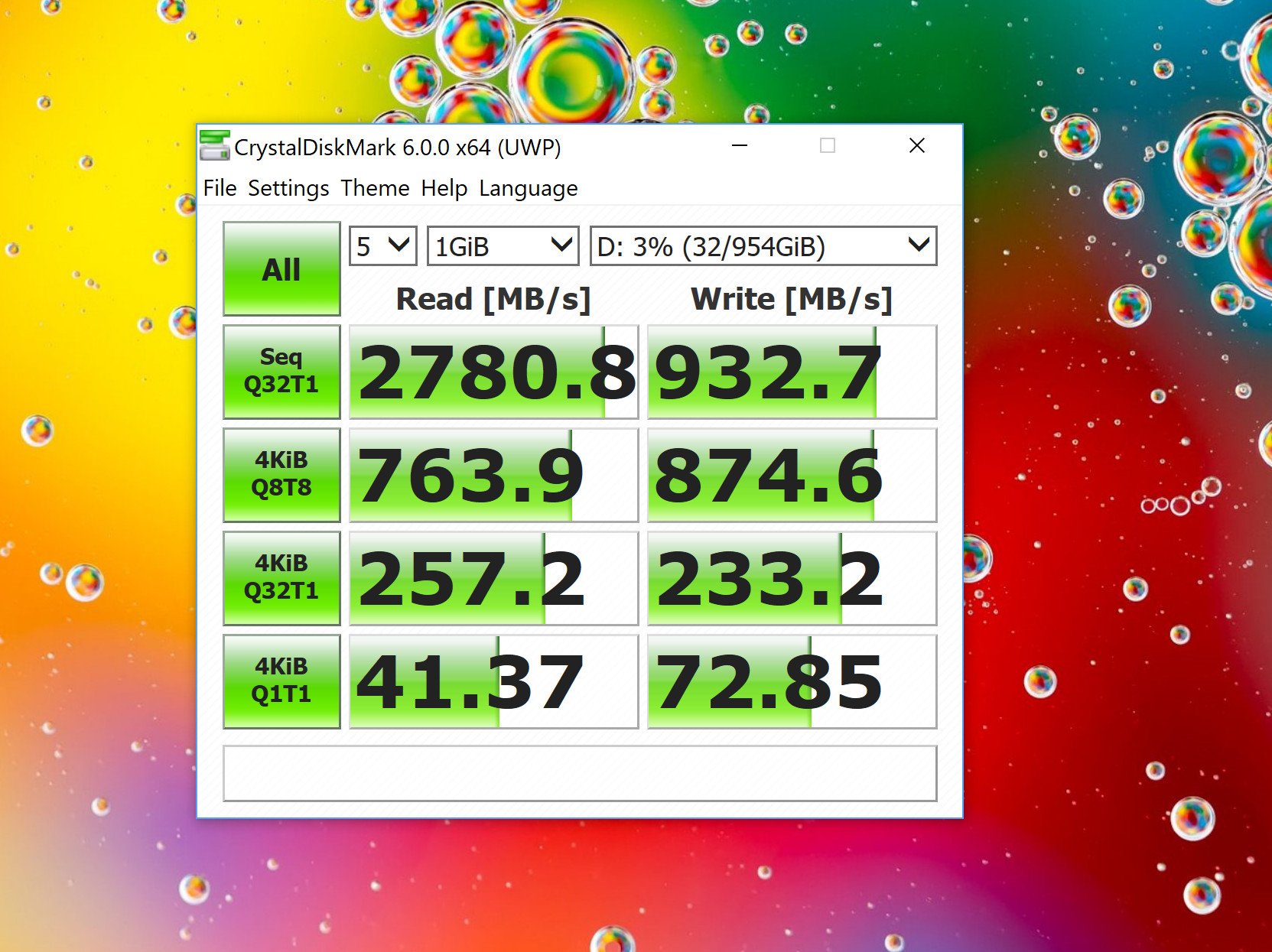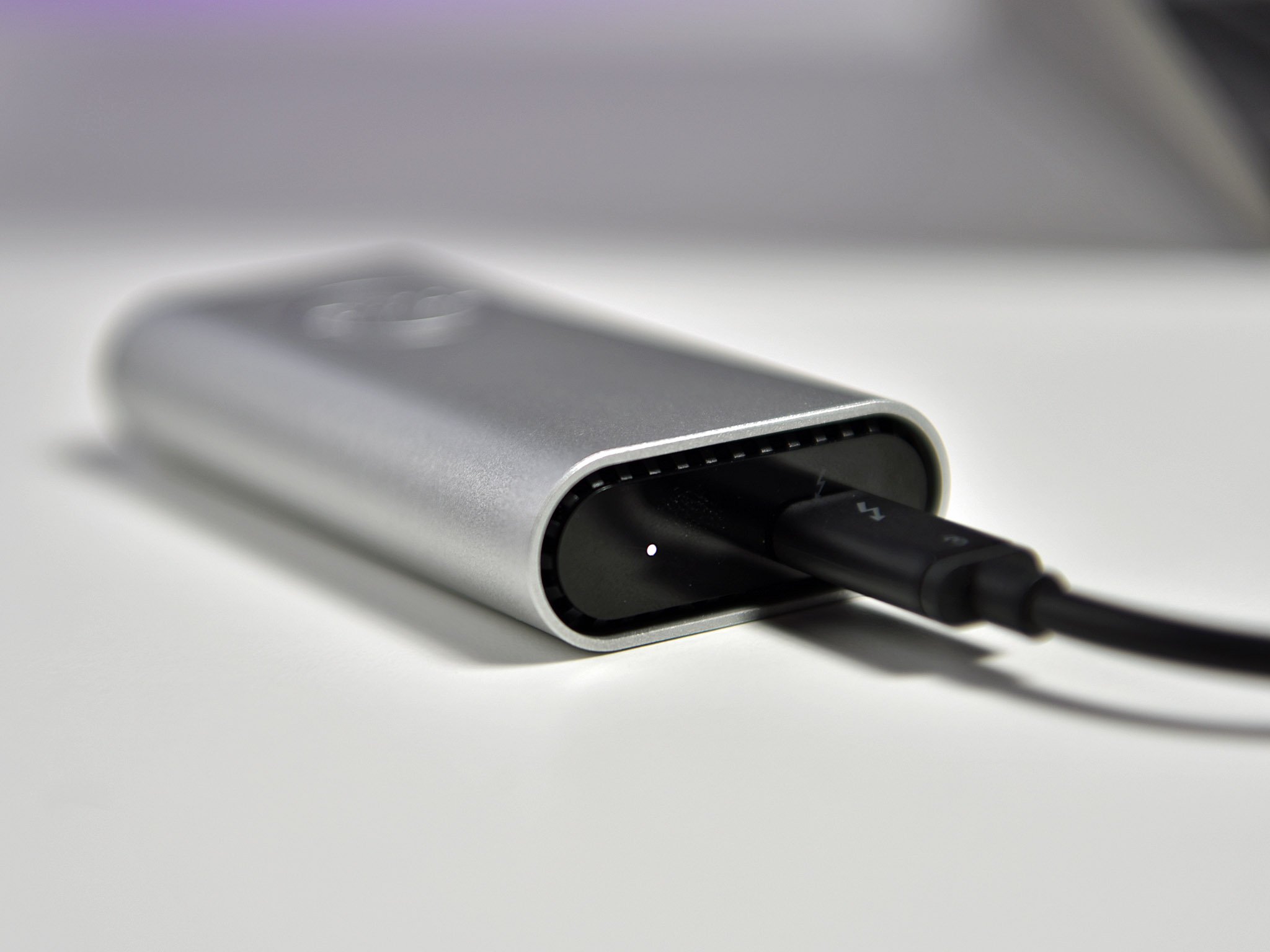Dell Portable Thunderbolt 3 SSD review: Blazing fast speeds at a steep price
Living on the cutting edge is never cheap, and Dell's new Thunderbolt drive proves that point.


For external and portable storage solution, nothing really beats the cheap, relatively fast, and tiny USB thumb drive. For just $20 you can grab 16GB of premium SanDisk Extreme flash drive with "up to" 190MB/s transfer speeds.
But what if you need real power with some serious storage capacity? USB Type-C portable drives have been around for some time, but peaking at just 10GB/s with USB 3.1 Gen 2, they don't come close to theoretical speeds of Thunderbolt 3 at 40GB/s.
Enter the Dell Portable Thunderbolt 3 solid-state drives (SSDs). While they are far from cheap, these are the portable drives you want if you do a lot of massive file transfers.
Dell Portable Thunderbolt 3 SSD: What it is
Weighing just 2.15 ounces (61g) the all-metal Dell Portable Thunderbolt 3 SSD packs a punch. The drive is under an inch tall (0.7 inches to be exact) and just about four-inches in length making it very pocketable.
The device feels hollow, and that's because it is (mostly). Inside (although you cannot open it) there is a premium Toshiba XG5 TLC PCI Express 3.0 x4 NVMe SSD with a teeny fan. The chassis, while metal, has plastic ends where the USB Type-C plug, LED and small venting holes are found.
Storage options include 500GB ($389) or a massive 1TB ($719). To put that into perspective, Samsung's popular T5 portable SSD drives with USB 3.1 connectivity are half the cost at $128 and $346, respectively.
Portable Thunderbolt 3 SSD performance

Dell does not cut corners with its Portable Thunderbolt 3 SSD. While the Samsung T5 has read and write speeds "up to" 540MB/s, with Dell you will near five times the performance.
Get the Windows Central Newsletter
All the latest news, reviews, and guides for Windows and Xbox diehards.
CrystalDiskMark revealed read speeds of 2,800MB/s and around 1,000MBs for write. That's still below what an internal high-end SSD can achieve like the new Samsung 970 EVO or 970 PRO, but for an external portable drive it blows the water out of the competition in the Type-C and USB 3.1 category and even for other, physically larger Thunderbolt 3 drives which only hit the 1,500MB/s area for reads.
In a real-world example, we transferred a folder with three videos in it to a Samsung 970 EVO SSD in the Lenovo X1 Carbon. The 7.31GB transfer took just 7.5 seconds versus the 28 seconds of a typical SanDisk Extreme USB 3.1 Type-A thumb drive.

Extrapolating that data to a 50GB file, the Dell did it in under a minute, versus the three and half minutes with a typical USB 3.1 thumb drive.
With the little fan on the inside, the Dell drive never gets hot after extended file transfer, but you will feel a bit of warmth from the metal chassis. The fan is relatively quiet but you will hear it whirring.
Is Dell's Portable Thunderbolt 3 SSD worth the price?

There's no way the Dell Portable Thunderbolt 3 SSD is a smart choice for those who only need to transfer documents, some photos, or videos between PCs. While it works well and that 1TB option gives you plenty of space for backups, a high-performance Thunderbolt 3-enabled SSD is too cost prohibitive to make it a recommended purchase for most people.
But the Dell Portable Thunderbolt 3 SSD is not meant for regular consumers or casual use. It's for professional video editors and photographers who transfer hundreds of gigabytes of data a day between PCs and devices. For them, shifting 500GB of data is a common practice, and Dell delivers.
Even if you are a pro, there are some downsides to Dell's drive. For one, you cannot open the device (at least not in a visible, serviceable way). Being able to use a better performing SSD, or one with more storage, would be useful while keeping that expensive Thunderbolt 3 controller — the read speed is excellent, but that 1,000MB/s write speed is well below what the Samsung 970 PRO can deliver at 2,300MBs in our tests.
The controller is also not a great solution for non-Thunderbolt 3 systems. Even though the Type-C connector is the same between USB 3.1 and Thunderbolt 3 systems, that doesn't mean they are interoperable. For example, plugging the Dell Portable Thunderbolt 3 SSD into a Surface Book 2 — or any other non-Thunderbolt 3 PC — shows the drive, but it is not usable. This restriction is common to other external Thunderbolt 3 drives, so it is not a Dell-issue. But it is something to be aware of before buying.
Pros:
- Light at just 2.5 ounces.
- Extremely portable.
- Full Thunderbolt 3 speeds with fast SSD.
- Handsome design.
Cons:
- Expensive and only for "pros."
- Not backwards compatible.
- Cannot service or upgrade SSD.
Putting those minor complaints aside, and there is nothing quite like the Dell Portable Thunderbolt 3 SSD on the market — at least not at this size with this performance. Most other portable Thunderbolt 3 drives are four or five times the weight, so you're paying for both the great SSD and the super-light enclosure. That puts the Dell in its own, premium league for portable Thunderbolt 3 drives.
Whether the performance and portability of the Dell Portable Thunderbolt 3 SSD are worth it is up to you, your job requirements, and your bank account. But the result is striking. The good news is technology trickles down, so in a few years, Thunderbolt 3 portable drives are likely to be standard — and significantly cheaper. Sit tight.

Daniel Rubino is the Editor-in-chief of Windows Central. He is also the head reviewer, podcast co-host, and analyst. He has been covering Microsoft since 2007 when this site was called WMExperts (and later Windows Phone Central). His interests include Windows, laptops, next-gen computing, and wearable tech. He has reviewed laptops for over 10 years and is particularly fond of 2-in-1 convertibles, Arm64 processors, new form factors, and thin-and-light PCs. Before all this tech stuff, he worked on a Ph.D. in linguistics, performed polysomnographs in NYC, and was a motion-picture operator for 17 years.
